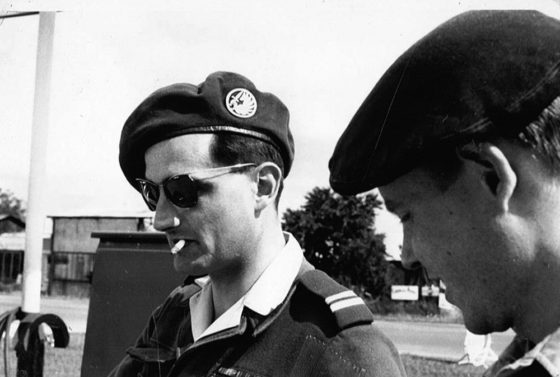Today, John Paul Jones is remembered as an icon of the Revolutionary War and America’s first great naval hero. Amazingly, his name and exploits were largely forgotten until more than 100 years after independence. (Image source: U.S. Navy)
“John Paul Jones had predicted, during the darkest days of the Revolutionary War, that the American navy would one day become ‘the wonder and envy of the world.’”
By Robert Hornick
2017 MARKS THE 225th anniversary of the death of John Paul Jones, Revolutionary War hero and father of the American navy.
Today Jones is remembered for his meticulous preparation of ships and sailors, tactical brilliance in battle, personal courage, and strategic vision—talents fully displayed in his most famous victory: capture of the British man-of-war HMS Serapis in the North Sea off Flamborough Head. “I have not yet begun to fight!” Jones famously replied to the English captain calling for his surrender. Jones’s sails were shredded and his ship was on fire, but he fought on—and won.

His victory was cheered in America and Europe and made him, briefly, the most celebrated sea warrior of the age. The king of France gave him a gold-hilted sword for his valor. The future American President John Adams enthused that if Jones could command six line-of-battle ships to engage an equal British force, the result would be “glorious” for the United States and lay a “sure foundation” for American prosperity.
The adulation was sincere but fleeting. When the war ended, America’s attention turned to nation building and Jones was forgotten. He died in Paris ten years after the British surrender at Yorktown, age 45, a broken man. He was buried in an unmarked grave on the outskirts of the city. The cemetery closed a few years later. It became, variously, a storage lot for night soil carts, a venue for dog- and cockfights, then the site of a laundry, boarding house, stable, and barn.
Jones lay in his lost foreign grave for a hundred years, unremembered except by a few intrepid loyalists and fellow warriors who began to reconstruct his legacy. They found a trove of his personal papers in a baker’s shop in lower Manhattan, restored his Scottish birth cottage, and wrote biographies of him rejecting the unflattering caricatures drawn by a resentful English press.

At the end of the 19th century, Horace Porter, American ambassador to France from 1897-1905 and a Medal of Honor recipient for bravery in the Civil War, led a six-year search for Jones’s lost grave and remains. He found them, exhumed the remains, and transferred them to the United States.

President Theodore Roosevelt then staged an elaborate commemoration ceremony at the Naval Academy at Annapolis—the greatest military and naval pageant, some said, ever witnessed in the United States. His purpose was twofold: to celebrate Jones’s forgotten talents and achievements, but also to implore the nation—using the discovery of Jones’s lost grave and his recovered legacy as inspiration—to build a world-class navy and project American power abroad.
Roosevelt then sent a fleet of 16 battleships (the Great White Fleet), manned by 14,000 sailors and marines, to circumnavigate the globe—a cruise, never before attempted by any nation. The voyage lasted fourteen months, signalling to the world the coming of age of U.S. global power.
John Paul Jones had predicted, during the darkest days of the Revolutionary War, that the American navy would one day become “the wonder and envy of the world”—as it indeed became a century later on Roosevelt’s watch. The recovery of Jones’s lost legacy and the successful search for his lost grave were important elements in building public support to fund a stronger navy and establish a new role in the world for the United States.
President Theodore Roosevelt, who ordered the U.S. fleet on an epic circumnavigation in 1907, venerated John Paul Jones’ legacy as part of a campaign to celebrate American naval power. (Image source: WikiCommons)
 As for Jones’s recovered remains, they now repose in a 21-ton marble sarcophagus in a crypt beneath the Naval Academy Chapel.
As for Jones’s recovered remains, they now repose in a 21-ton marble sarcophagus in a crypt beneath the Naval Academy Chapel.
An inscription at the head of the sarcophagus reads, “He gave our navy its earliest traditions of heroism and victory.”
Robert Hornick, an independent scholar, is author of What Remains: Searching for the Memory and Lost Grave of John Paul Jones. (University of Massachusetts Press, 2017).












1 thought on “John Paul Jones – The Remarkable Struggle to Restore the Name of America’s Greatest Naval Hero”